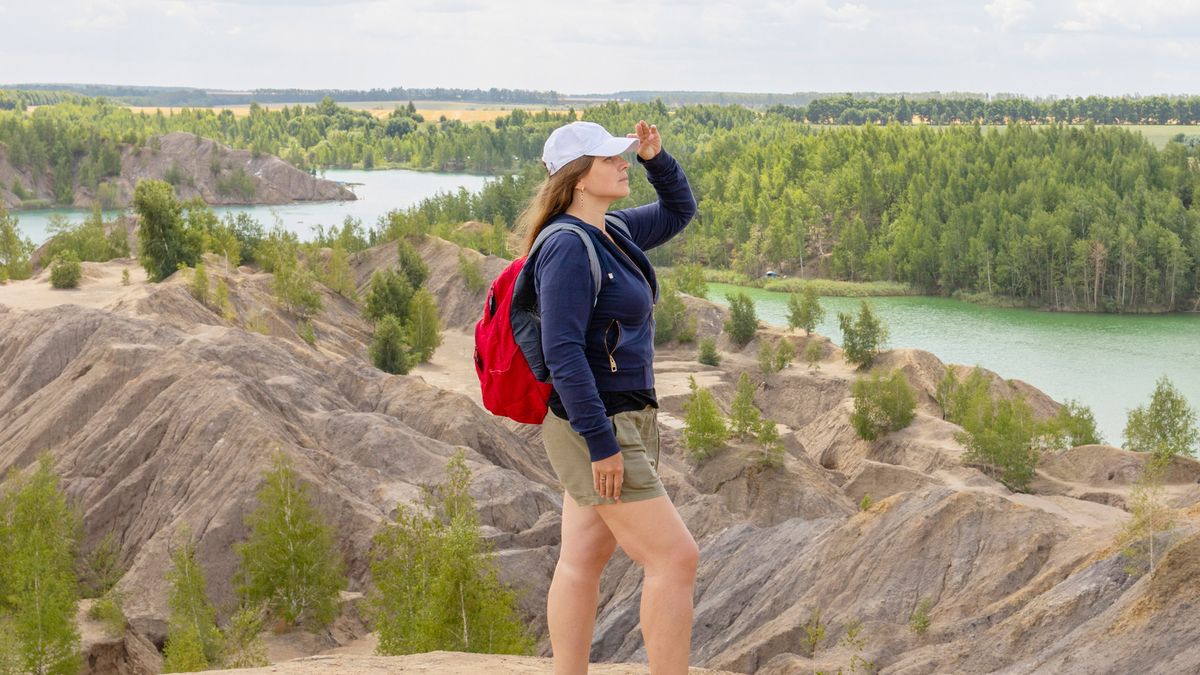My backpack sloshed as I hiked up the hill. I was carrying a Cotopaxi bag with cross-body straps at the waist and chest, equipped with an additional 22lbs /10kgs of water contained in a plastic bladder – not the sort of load that would cause military personnel to break sweat, but this was my first time going for an organized ‘ruck’.
I reached the top of the hill, marked with a stone, and was greeted by some stunning views of the UK’s Lake District. I was at the peak of Orrest Head, a small and accessible hill near Windermere, but our group only stopped to admire the view for a few moments before we hiked on down the other side, determined to tackle bigger challenges before the end of the day.
I was ‘rucking’, on a mission to walk around five miles (approximately 10,000 steps, according to my Garmin watch) while carrying a backpack loaded with additional weight. It’s an ancient form of exercise that’s still in use by militaries around the world today, with soldiers building up their endurance by going on long marches carrying heavy backpacks as well as equipment such as weapons.
Away from the military, rucking has had a bit of a resurgence amongst fitness fans of late. Where in the previous decade over-complicated approaches to fitness seemed to dominate the latest fads, the 2020s (possibly inspired by the lack of equipment available during the Covid-19 pandemic) has seen a focus on getting back to basics: using the best under-desk treadmills to walk at home; calisthenics; strength training; or ‘animal flow’, which requires only a floor to perform.
Rucking fits this trend down to a tee. You shoulder a heavy backpack and start walking, and that’s really all there is to it. You need to make sure you’ve got the right shoes; one of the best fitness trackers or GPS watches, or an app like AllTrails so that you can track your route and find your way back safely; some comfortable clothes, a water bottle and a high-quality backpack – I recommend one with cross-body straps to help distribute the weight more evenly across your torso.
The benefits of rucking
Rucking is said to benefit our muscles greatly, contributing to ‘trunk activation’. The ‘trunk’ of our body comprises the abdominal and lower back muscles, and these are the muscles which relax and get soft after too much sitting and not enough moving.
According to research from the Education University of Hong Kong, published in 2017, walking with a backpack load of 10% of your bodyweight offers “critical changes of trunk muscle activation and lumbar spine loading”, forcing your abs and back to work more effectively – to say nothing of your butt if you hit a steep incline.
It’s great for fat loss too. Walking in general is highly beneficial: it’s a low-intensity form of exercise that can be done by most people easily, and it’s free. It’s often the only kind of exercise many of us get, and we should all be trying to incorporate more walking into our days.
However, adding extra weight will mean you burn more calories, as you’re expending more effort in order to keep yourself moving. Exactly how many you’ll burn is a matter of debate and varies widely from person to person, but the quicker you move and the more weight you carry, the more you’ll burn.
A muscle-building, fat-burning activity that’s less intense than running, cheap and easy to try, and which gets you out into nature, and undoes the damage of sitting too much – what’s not to like? I’m a convert, and I’d urge you to give it a go.











